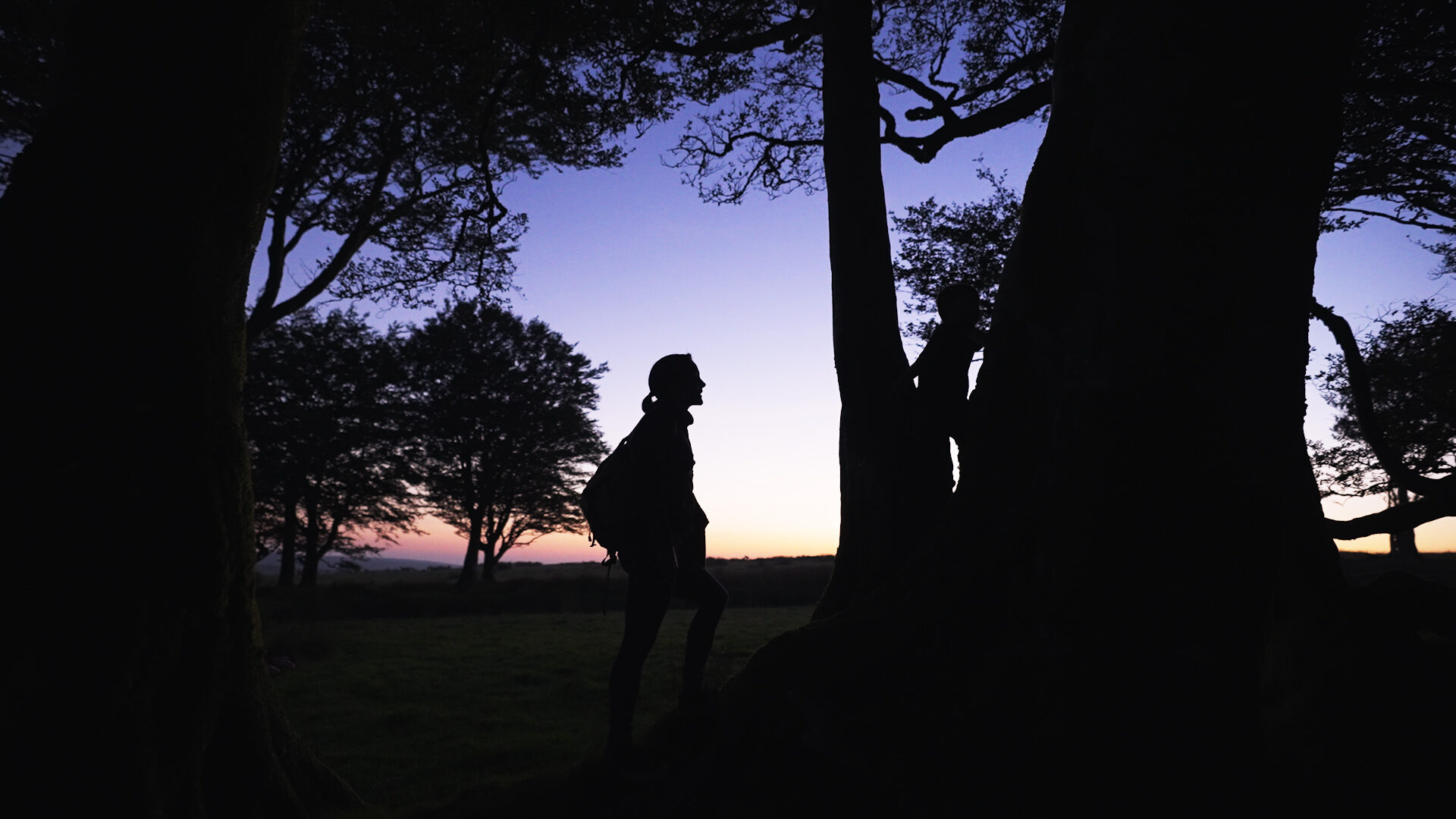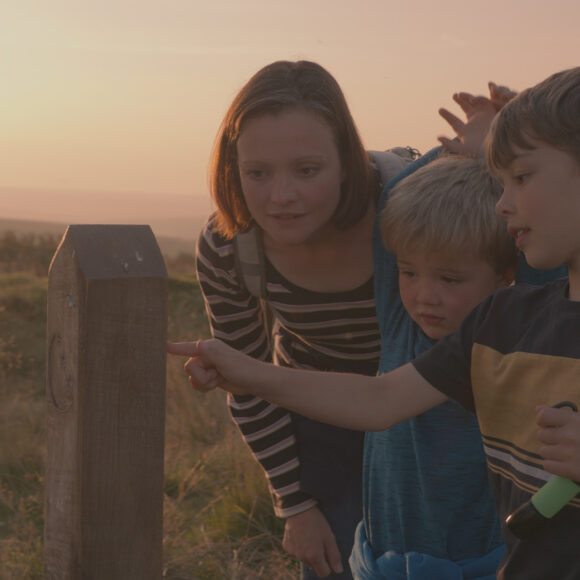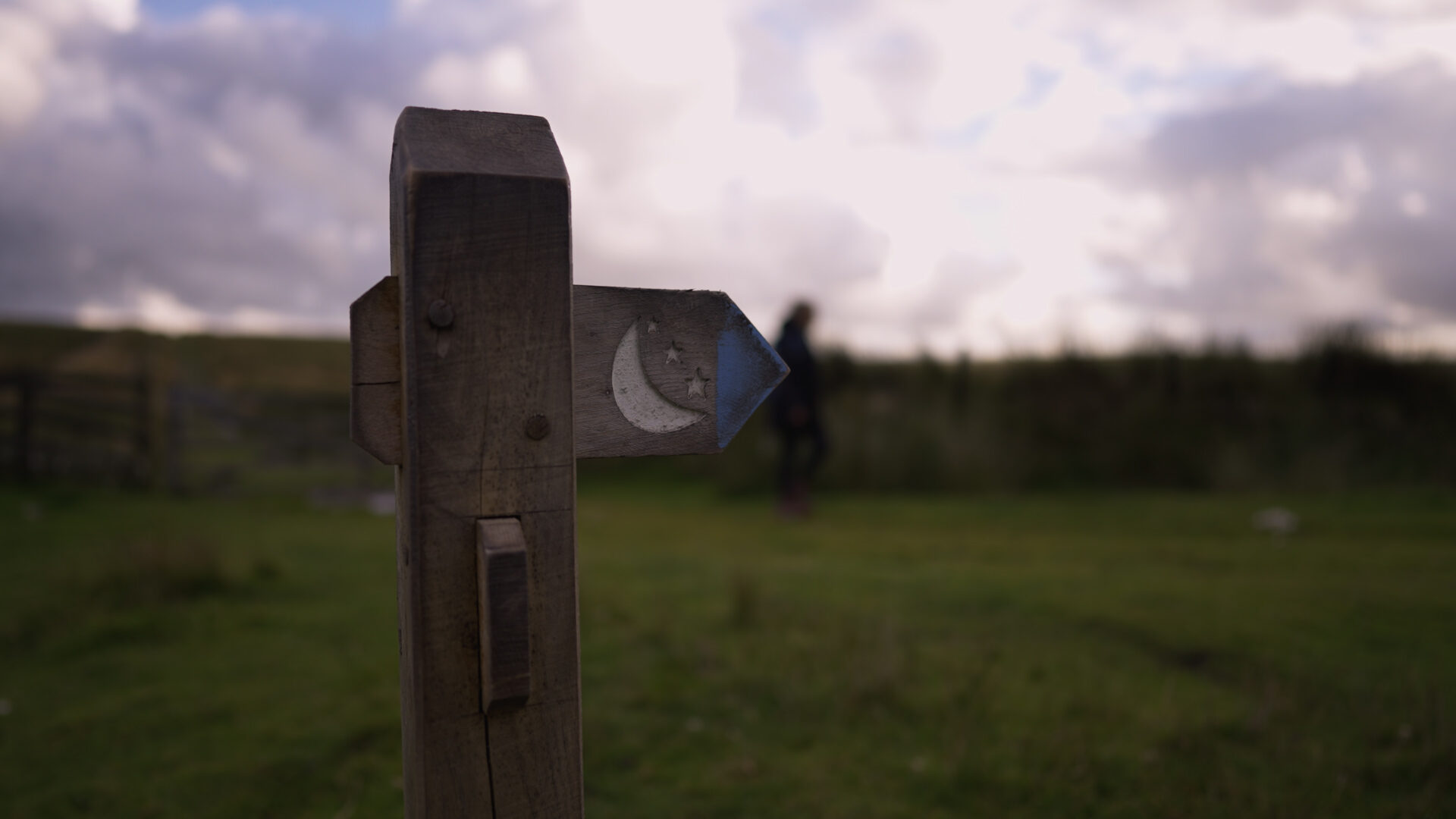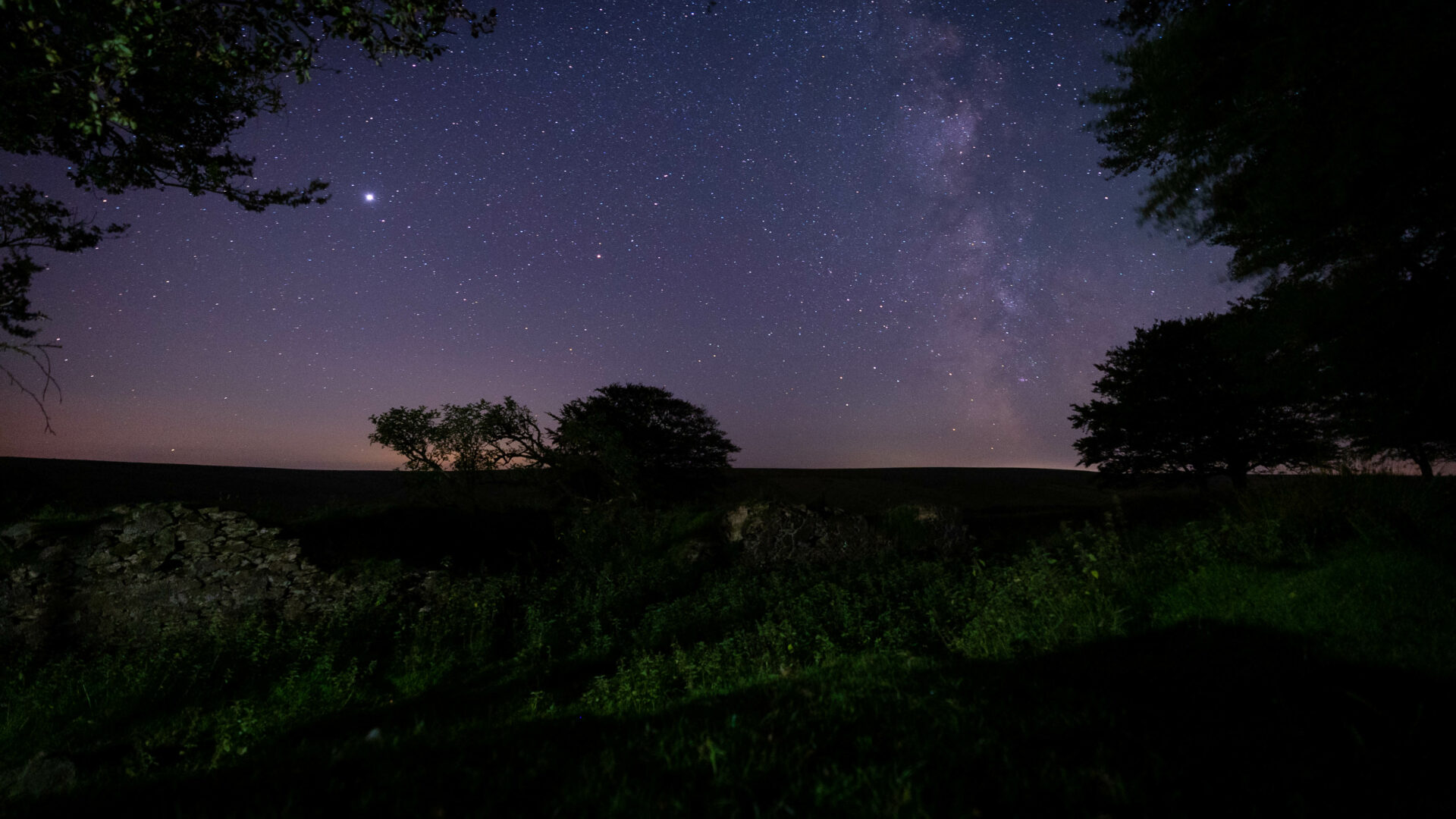
Discovering: Exmoor’s Dark Sky Discovery Trail
-
Date posted: 24/02/2022
-
Time to read: 10 minutes

Ailsa Stevens
Ailsa is Communications Officer at Exmoor National Park Authority. She shares with us her magical Exmoor Dark Sky Discovery Trail experience in the heart of the National Park’s Dark Sky zone.
One warm September evening last year, myself and two very excited small boys set out to be amongst the first to try the National Park’s new Dark Sky Discovery Trail.
The route was launched at the start of Exmoor’s fifth Dark Sky Festival in the autumn, in the same year that we marked ten years as an International Dark Sky Reserve. Billed in the accompanying guide as ‘an easy walk under Exmoor’s dark skies to Larkbarrow ruins’, the two-mile route starts on the high moors between Exford and Porlock, at the heart of the National Park’s dark sky zone – a core area conserved for its minimal light pollution. On a clear night it provides the chance to experience 360-degree views of near pristine starlit skies in one of the darkest places in the country. Exmoor’s status as Europe’s oldest dark sky reserve also affords a wealth of benefits for nocturnal wildlife, such as insects, owls and 16 of the UK’s 17 breeding species of bat.

We arrived just as the sun was setting, in near-perfect conditions for a night-time adventure. As we set off along the wide, stony path, under almost-cloudless skies, there was barely a breath of wind and for once the forecast had held true. At intervals amongst the long, shaggy purple moor grass we spied the backs of sheep grazing and on the path was ‘evidence’ that a large herd of cattle had passed through, who were now staring back at us in the distance. My sons were excited to climb up every bank and patch of raised ground to wonder at just how far they could see, the humidity and expanse reminiscent of a great African plain. The route is marked out with beautifully carved traditional waymarker signs that are just as easy to follow by night as by day thanks to their luminescent paint.
One mile from the road a distinctive engraved post marks Larkbarrow ruins, the best place for stargazing and the remote midway point of the walk. Here we stopped to set up a picnic of hot chocolate and cookies, and snuggled up on a blanket to watch the first stars appear. It wasn’t long before Saturn revealed itself, soon joined by Jupiter and then a torrent of tiny pinpricks with the long train of the Milky Way easily visible to the naked eye. We could have used binoculars, but it wasn’t necessary to feel the deep sense of awe that soon came over us as we contemplated our place in this vast, inky darkness. I could tell my boys felt it too because there was a rare moment of silence after the excitement of arrival. Looking around the skyline, not a single point of artificial light was visible, making for a timeless experience – one that spanned millennia and had been shared across generations of humans. As the moment came for us to leave, we pulled out our red light torches, which have the advantage of preserving night vision. I’m told you can achieve much the same effect by strapping the red wrapper of a well known cheese over the end of a white torchlight!

Several months on and the exhilaration of that night is still a frequent topic of conversation in our house – memories that I hope will contribute to a lifelong passion for outdoor adventure. I urge anyone with a love of Exmoor and nature’s treasures to discover the wonder of Exmoor’s exceptionally dark night skies and add this experience to their bucket list.
We also had the privilege of the whole excursion being expertly captured as part of a short film that ENPA has produced to showcase the experience. You can watch it here and also order a trail guide (£1) and find links to OS mapping. The guide is also available to buy in the Exmoor National Park Centres at Dulverton, Dunster and Lynmouth, where it’s also possible to rent a telescope!
This feature appears in the current spring issue of Exmoor Magazine, available online , on social @exmoormagazine and in shops throughout the region.
